The Aga Khan Centre opened in Summer 2018 and is “a place for education, knowledge, cultural exchange and insight into Muslim civilisations. The organisations that are located here work together to bridge the gap in understanding about Muslim cultures and to connect the public to global development issues.”
Location and Building
I first spotted The Aga Khan Centre on a walk through the regenerated areas of Kings Cross and its new shopping destination Coals Drop Yard. The Centre is in the Knowledge Quarter (where joined up thinking begins) and sits between the University of the Arts Central Saint Martins Campus, The House of Illustration, Google, and Youtube, with Facebook moving in soon. The wider area itself a place of education, culture and knowledge. The bright white limestone of the building makes an impact and on a sunny day it looks sublime.
The Centre was designed by architect Fumihiko Maki. The architecture of the Centre has been very carefully and thoughtfully considered, and whilst modern, is also modelled on traditional Islamic architecture and courtyards.

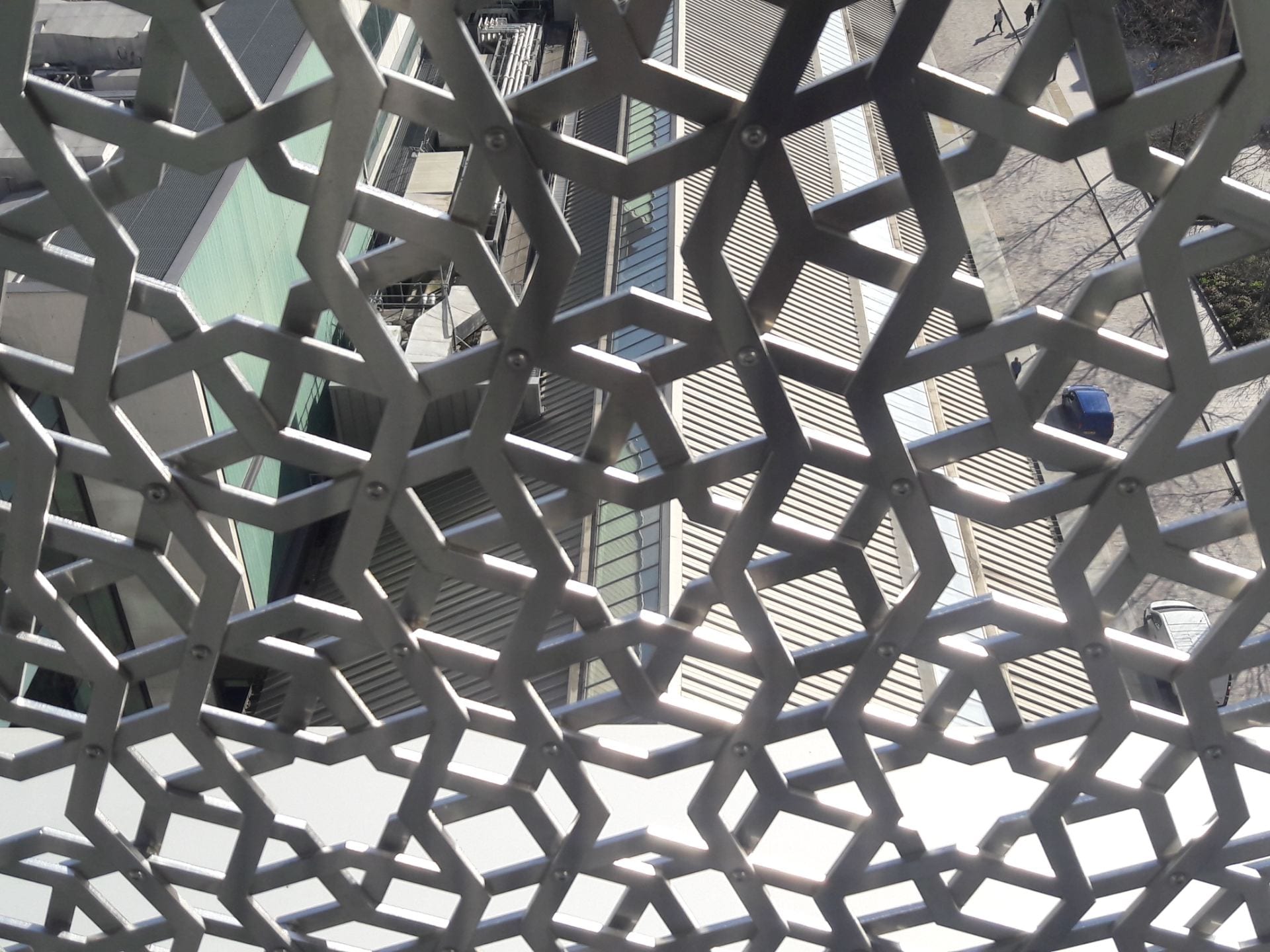

There are six gardens in the Centre, some of those we visited were: The Garden of Light, The Garden of Life, and The Garden of Learning and The Garden of Tranquility. The 8 pointed star motif is cleverly used throughout the finishes and decoration. Light, shadows and reflection cleverly playing off it when designed into the ceilings, balconies and window decoration.

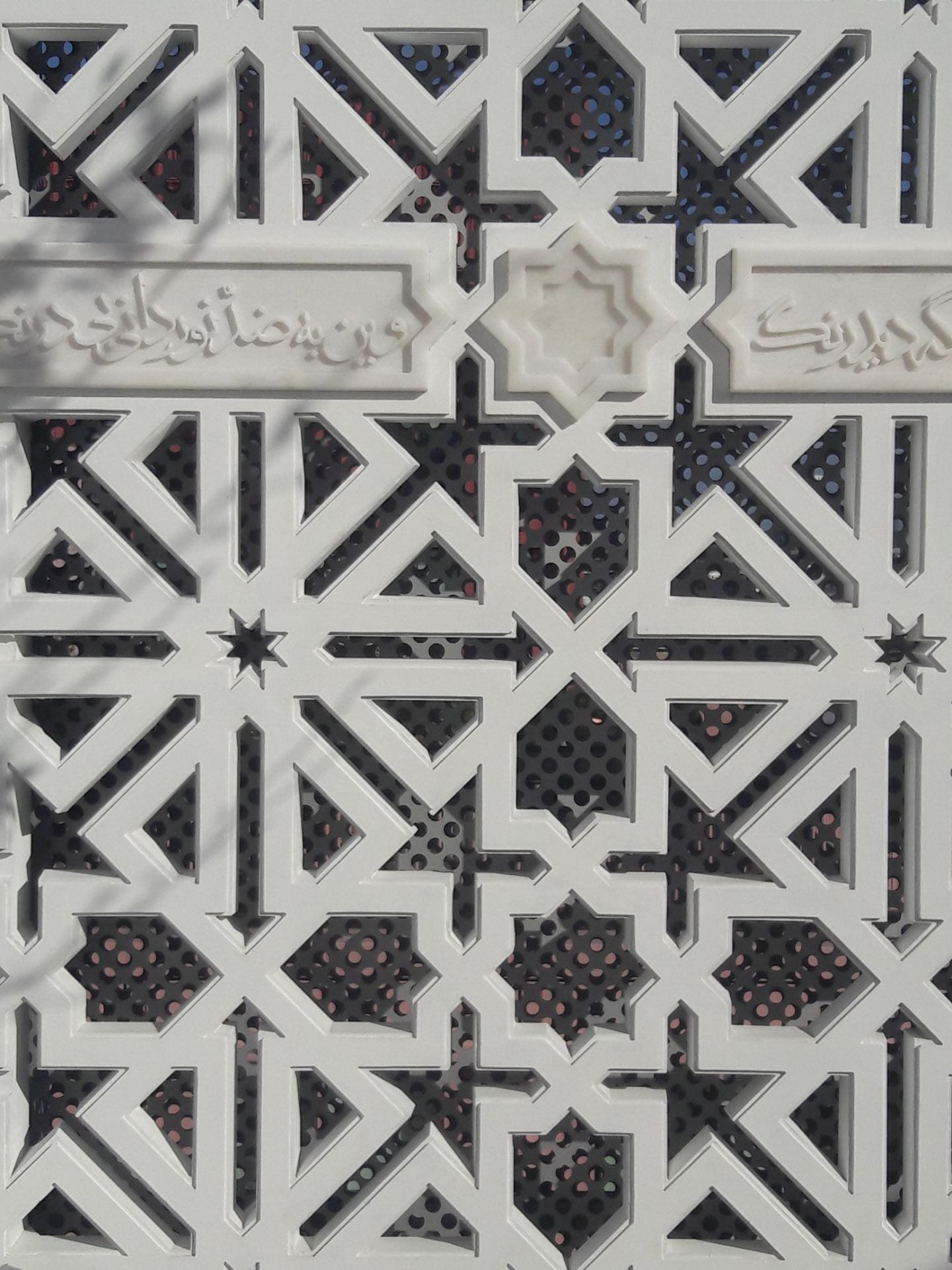

The Library
We had a beautiful tour of the Library by our attentive and thoughtful hosts. The Library is a merging of the Libraries of the Institute of Ismaili Studies and the Institute for the Study of Muslim Civilisations of the Aga Khan University and supports students, faculty and staff with their study, research and teaching needs. Application from external researchers can be made using the online form – the Library team will consider the request and decide the best level of membership or a more temporary arrangement if suitable.
Spaces
The Library is light and airy, quiet and clean and feels like a sanctuary from busy Kings Cross. Our hosts told us that they worked with the architects and had a lot of input into creating this beautiful space which is aesthetically pleasing but also functional.
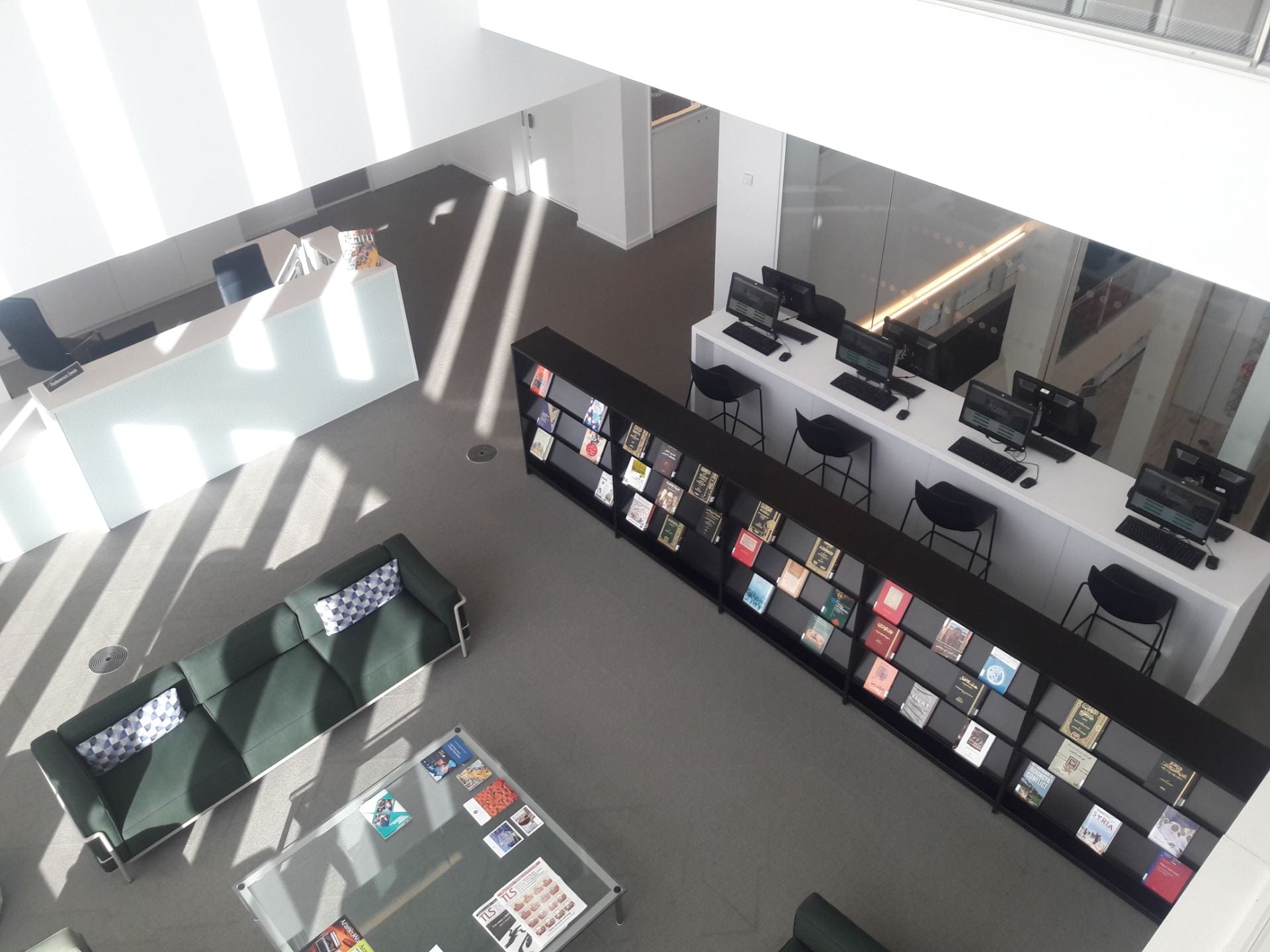
The Terrace of Learning, extending the Library into the outdoors, is a contemplative space to support learning with reflection. It is in the North African style and is sensory with growing evergreen herbs: Rosemary, lavender myrtle, and verbena.
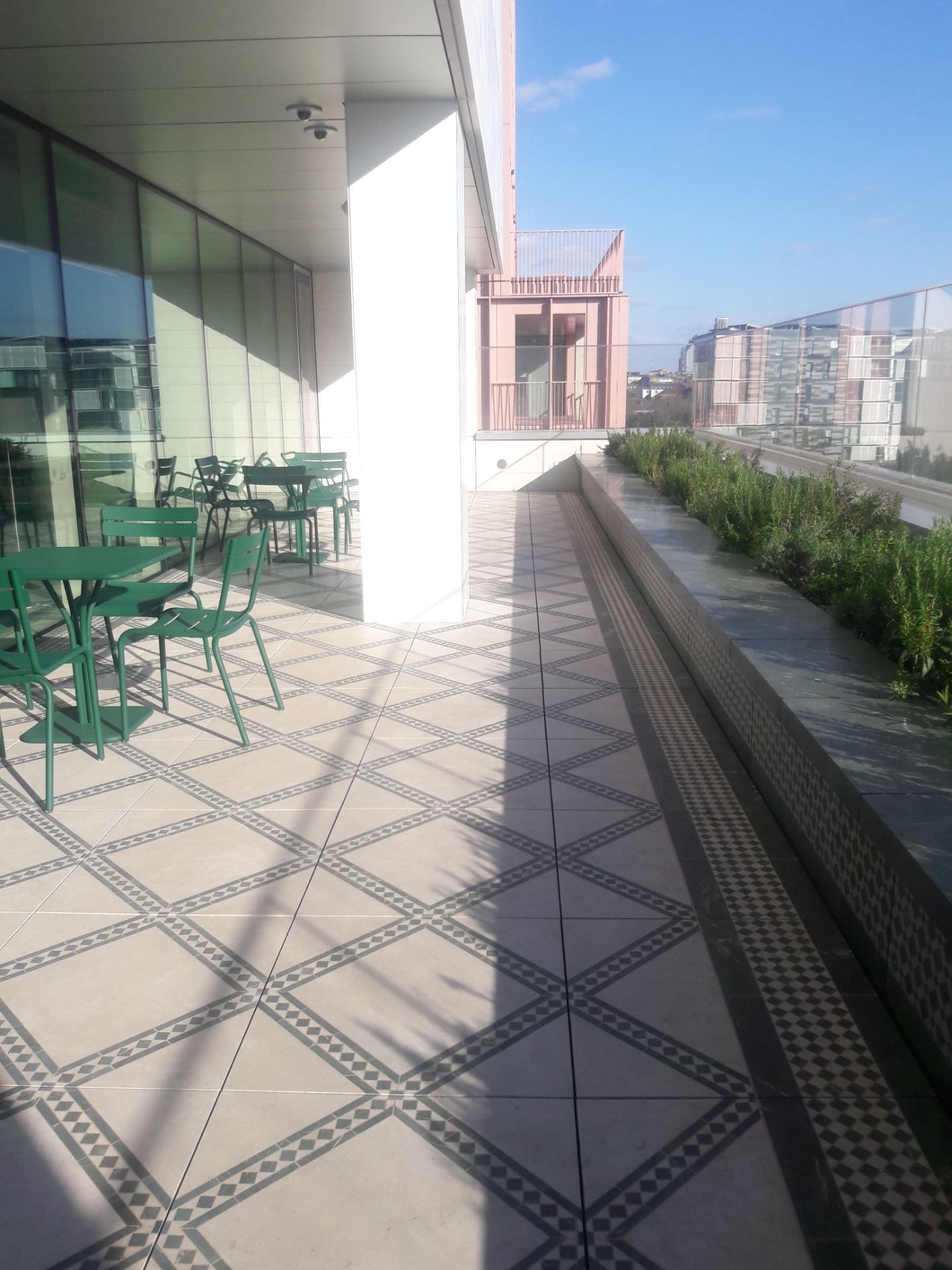
Inside the Library study benches were a space-effective way of adding seating. They have proved to be one of the most popular areas for library users to sit because of the favourable light.
There are a range of seating options in the Library including standard study desks, desks within booths for privacy and even private study rooms.
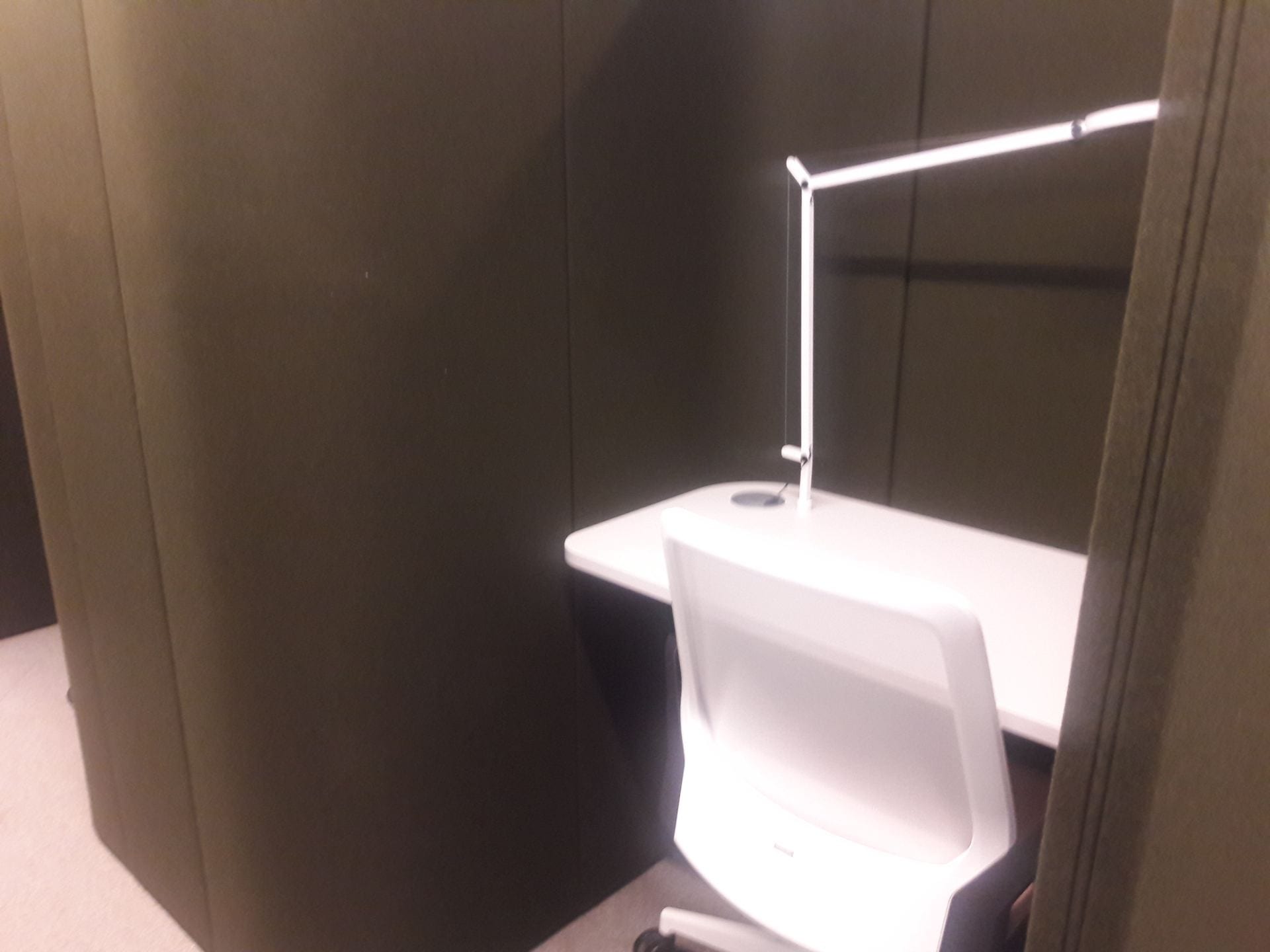
The Library technology includes self-service book borrowing machines operated by contactless library card. There is also a state-of-the-art overhead self-scanning machine called ScanSnap which was being used on the day for self-service digitisation. This was connected to a pc where digitisation results could immediately be viewed and edited.
Resources
The Library has over 50,000 volumes in various languages including Arabic and Persian. As well as an extensive collection of Modern works to support the subjects at the Institute, the Library houses special collections, rare books and precious manuscripts. The Library uses The Library of Congress system and EDS (Ebsco Discovery Service) for their discovery system.
Special collections.
On display in the Library was a collection of Ismaili coins from the Fatimid period.
Other special collections include rare books in Ottoman Turkish. Our hosts had selected some treasures from their wider rare books collection which were on display for us to peruse. These included:
- A translation of Plato’s Republic and also a unique holograph manuscript both by Muhammad Abduh the reformer and scholar, while he was in exile in Paris in the 1880s.
- A Qur’an (identified as Moroccan from the calligraphy).
- A work by famous Muslim scientist Shams al din al Kafri.
- Persian poetry Rose Garden of Persia by Louisa Stuart Costello.
- Islamic bookbindings.
The tour of the Centre ended with a visit to the current exhibition in the dedicated ground floor exhibition space: Gardens and Wellbeing: an Islamic perspective.
Thank you to our wonderful hosts and to ALISS who arranged the visit.